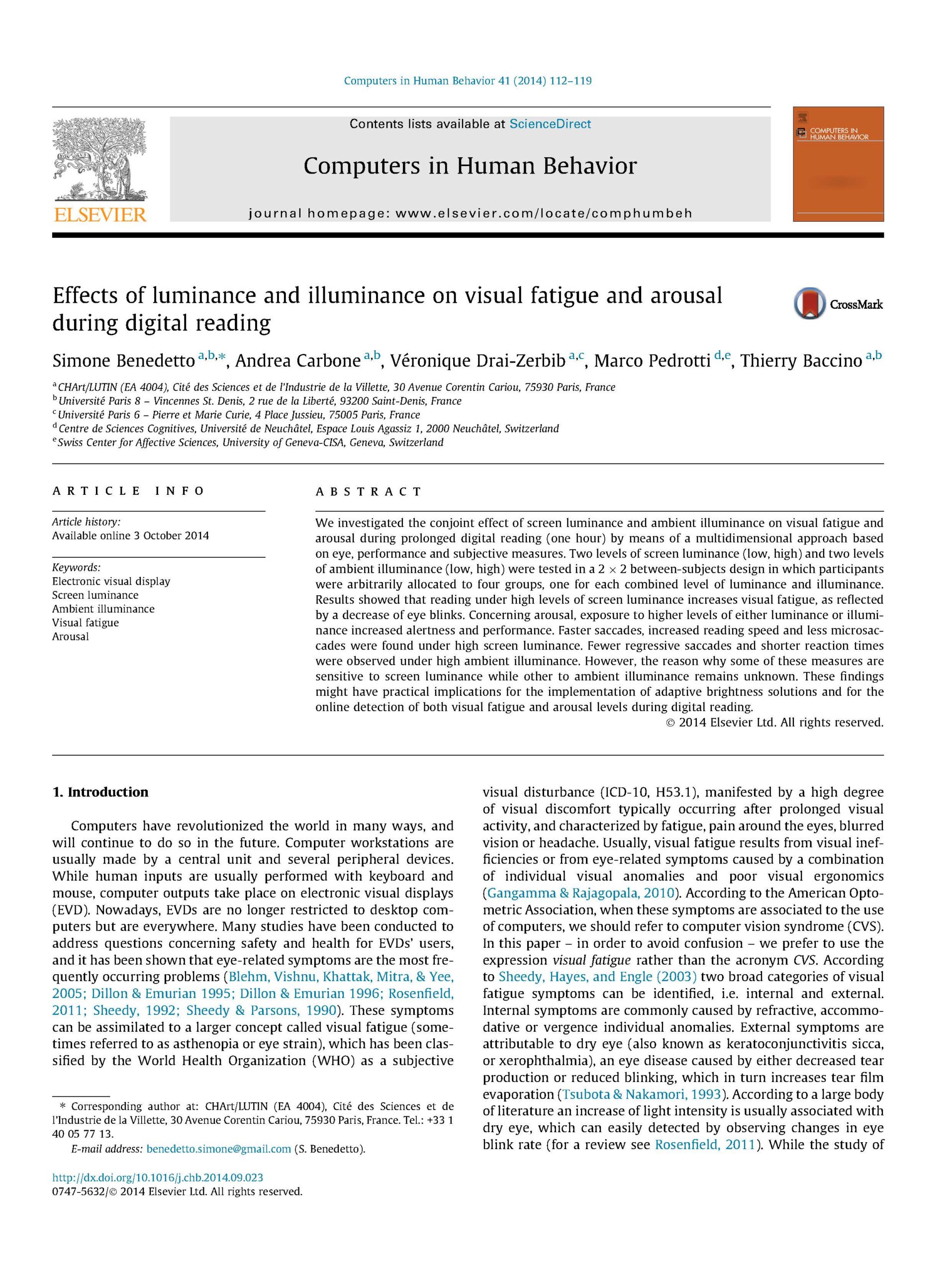We investigated the conjoint effect of screen luminance and ambient illuminance on visual fatigue and arousal during prolonged digital reading (one hour) by means of a multidimensional approach based on eye, performance and subjective measures. Two levels of screen luminance (low, high) and two levels of ambient illuminance (low, high) were tested in a 2 x 2 between-subjects design in which participants were arbitrarily allocated to four groups, one for each combined level of luminance and illuminance. Results showed that reading under high levels of screen luminance increases visual fatigue, as reflected by a decrease of eye blinks. Concerning arousal, exposure to higher levels of either luminance or illuminance increased alertness and performance. Faster saccades, increased reading speed and less microsaccades were found under high screen luminance. Fewer regressive saccades and shorter reaction times were observed under high ambient illuminance. However, the reason why some of these measures are sensitive to screen luminance while other to ambient illuminance remains unknown. These findings might have practical implications for the implementation of adaptive brightness solutions and for the online detection of both visual fatigue and arousal levels during digital reading.
Effects of luminance and illuminance on visual fatigue and arousal during digital reading
